In this article:
Bumps on the forehead are common and can be a cosmetic problem for some people. These forehead bumps typically occur due to acne, but they may also form from other skin conditions including cystic acne, sebaceous cysts, and keratosis pilaris.

These problems generally develop as a result of excessive sebum production, clogged pores, genetics, skin aging, and the use of pomades. Such concerns can be addressed with medical treatments and home remedies as well.
This article discusses such medical treatments, at-home treatment, and lifestyle changes that can help clear the bumps on your forehead and also help manage the underlying conditions.
Underlying Causes of Forehead Bumps
Many skin conditions can cause bumps on the forehead but acne tops the list. Other possible culprits include:
- Keratosis pilaris
- Ingrown hair
- Cherry angiomas
- Sebaceous cysts
- Physical trauma
- Dermatosis papulosa nigra (DPN)
- Seborrheic keratoses
- Lipoma
- Measles
- Fungal infections such as dandruff
- Primary and secondary milia
- Rosacea
- Contact dermatitis
- Folliculitis
- Boils
- Sebaceous hyperplasia
- Hormonal fluctuations triggered by puberty, pregnancy, or some medical disorder such as polycystic ovarian disease (PCOD)
Treatment for Forehead Bumps

The medical treatment for the bumps on your forehead will depend on their underlying cause.
So, your dermatologist will first examine your skin and inquire about your symptoms to arrive at a diagnosis. He/she will then prescribe the most suitable intervention to treat the condition you are suffering from.
Here are some of the commonly used medications for forehead bumps:
- Cortisone or hydrocortisone ointments to treat dermatitis
- Prescription-strength antifungal ointments if the bumps are due to dandruff or if pityrosporum folliculitis occurs on the sides of your forehead (temples)
- Benzoyl peroxide ointments that are available over-the-counter for inflammatory acne
- Prescription-strength topical retinoids with or without antibiotics (combination therapy) for pustular acne and comedones (1)
- Corticosteroid injections for keloids (hypertrophic scars) or nodular acne (2)
- Anti-androgens for hormonal acne
- Hormonal therapy for PCOD
- Azelaic acid for post-inflammatory hyperpigmentation due to acne or comedones
- Prescription-strength exfoliating cleansers containing alpha-hydroxy acids (such as glycolic acid) or beta hydroxy acids (such as salicylic acid) to treat bumps due to ingrown hair strands, blackheads, whiteheads, or keratosis pilaris
Your doctor may also recommend the following in-office procedures:
- Milia extraction with a heated, sterilized tool
- Skin peeling with Eskata for seborrheic keratosis
- Surgical removal of lipoma
- Surgical removal of the keratin-filled capsule of the sebaceous cyst
- Cryosurgery or cryotherapy for warts or molluscum contagiosum
- Electrodesiccation of warts, skin tags, or DPNs
- Laser resurfacing with CO2 or Er:YAG laser
Home Remedies to Reduce Forehead Bumps
You can try the following home remedies to suppress and soothe acne bumps on the forehead, but only the mild kind.
Caution: Patch test each of these remedies on the underside of your arm before applying them to your forehead. This is to ensure that you are not allergic to any of the ingredients in the remedy and will not have an adverse skin reaction after trying the remedy.
1. Cold compress
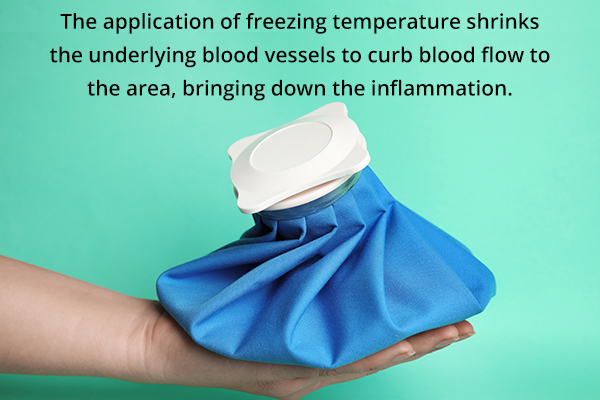
A cold compress can help reduce the pain and swelling of your bump for quick relief. The application of freezing temperature shrinks the underlying blood vessels to curb blood flow to the area, bringing down the inflammation.
How to use:
- Make a cold compress at home by wrapping a few ice cubes in a thin towel/cotton cloth. You can also use a clean bag of frozen vegetables, ice gel packs, or even cold spoons (nothing sharp) to get the job done.
- Apply the compress to the affected area for no more than 1 minute.
- Wait for 5 minutes before reapplying it for another minute, only if needed.
Caution: Do not place the ice directly on your skin or for prolonged periods, as it may further damage your skin and even cause frostbite.
2. Honey and cinnamon
Honey is enriched with skin healing nutrients that exhibit potent antimicrobial and anti-inflammatory properties. (3) This remedy can soothe your bump and also fight off the underlying infection that caused it in the first place.
How to use:
- Mix 2 tablespoons of honey with 1 teaspoon of cinnamon or turmeric to form a paste.
- Gently cleanse the infected skin.
- Apply the mixture to the affected area, and leave it on for a few minutes.
- Rinse it off.
3. Neem rinses or masks
Neem is a popular antiseptic agent. (4)
How to use:
- To prepare a rinse, boil neem leaves in water.
- To prepare a paste, combine neem powder and honey, aloe vera gel, or simply water.
- You can also use neem oil for spot treatment.
4. Turmeric powder
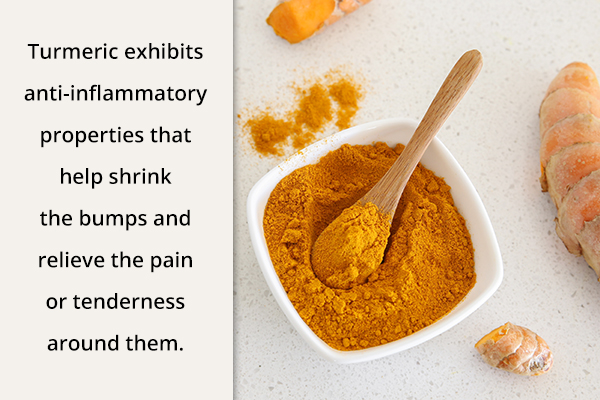
Turmeric is credited with broad-spectrum antibacterial activity, which can be traced back to its chief bioactive compound called curcumin. (5) Thus, turmeric can help kill the acne-causing bacteria to make your bumps go away faster.
Plus, turmeric exhibits anti-inflammatory properties that help shrink the bumps and relieve the pain or tenderness around them.
How to use:
- Mix a few drops of water in turmeric powder to make a thick paste.
- Apply the paste directly to the infected area.
- Let it dry and then wash it off.
5. Aloe vera gel
Aloe vera gel is an anti-inflammatory agent and can help bring down the swelling and redness in and around your bumps. (6) Plus, it is full of antioxidants that can aid skin healing.
How to use:
- Extract aloe vera gel from a freshly cut leaf and apply it directly to the pimple.
- You can also mix aloe vera gel with a little bit of turmeric powder to make a paste, and use it for spot treatment.
6. Kaolin clay masks
Kaolin clay masks deeply cleanse your skin by sucking the impurities settled inside your pores. Plus, they exfoliate the dead cells from the surface to allow your skin to breathe and regenerate.
How to use:
- Mix 1–2 tablespoons of kaolin clay with some rose water and an exfoliating ingredient such as yogurt or honey to make a thick, lump-free paste.
- Apply this mixture to the affected skin and gently massage it in for 1–2 minutes.
- Wash it off.
7. Orange peel scrubs
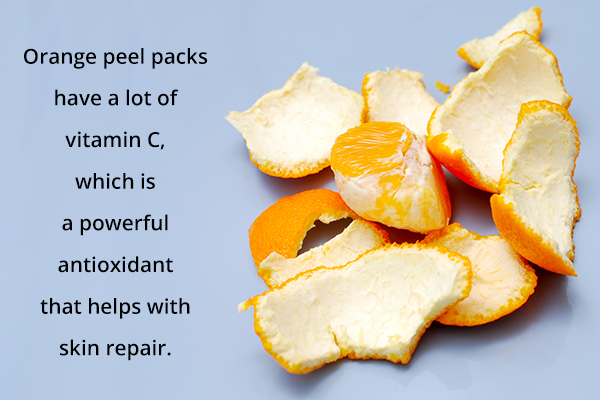
Orange peel packs within it a lot of vitamin C, which is a powerful antioxidant that helps with skin repair. It does so by triggering the production of collagen, which is the main structural protein used for making new skin cells to replace the damaged ones.
The granular effect in this remedy is provided by raw lentils or walnuts that are ground to a fine powder.
How to use:
- Mix orange peel paste and uncooked ground lentils or walnuts. You can add some oatmeal or sandalwood powder to thicken the mix.
- Massage the paste on your forehead or all over your face in light circular motions.
- Leave it on for 5 minutes and then rinse it off.
8. Yogurt-based masks
Yogurt contains lactic acid, which is a natural exfoliating agent that helps remove the dead upper layers of the skin.
How to use:
- Mix 3–4 tablespoons of yogurt with 1 tablespoon of honey or aloe vera gel. You may add some turmeric or rose water.
- If the paste is runny, add some oatmeal powder to make it thicker.
- Apply the paste to your face, and massage it in for 1–2 minutes.
- Let it dry for 10 minutes before washing it off.
OTC Skin Care Products
Skin experts often recommend using the following over-the-counter products to clear acne and the bumps on the forehead:
- Beta hydroxy acids such as salicylic acid-based exfoliators
- Lactic acid- and resveratrol- (7) based cleansers
- Benzoyl peroxide-based creams, which work best for inflammatory acne
- Exfoliating solutions with papaya or pineapple enzymes
- Moisturizers with hyaluronic acid, ceramides, niacinamide, vitamin A, epigallocatechin gallate (green tea extracts), chamomile extracts, and added SPF
- Vitamin C serums for skin repair
- Volcanic mud or clay face masks
- Oil-control toners
Self-Care Measures
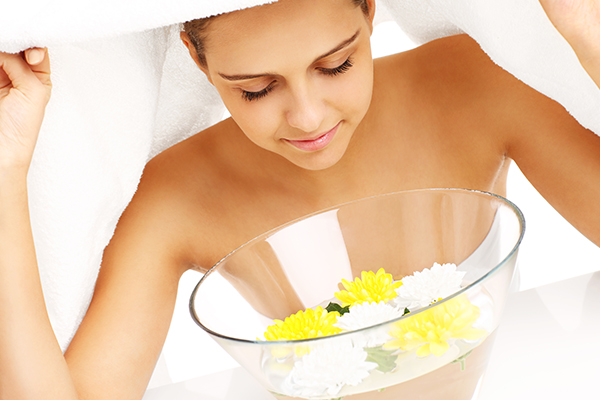
Here are some self-care measures to recovery:
- Don’t pick, squeeze, or pop any pus-filled lesions as this causes scarring and spread of infection to other areas of the skin.
- Prolonged unprotected exposure to solar radiation is a major contributor to the onset and worsening of skin conditions such as seborrheic keratoses that cause bumps on the forehead. Therefore, always apply a good-quality, broad-spectrum sunscreen on the exposed areas of your body before stepping out during the day. Make sure that your sunblock offers an SPF of 30 or higher and contains zinc and/or titanium oxide.
- Follow a stringent skin care regimen that includes daily cleansing, toning, and moisturizing plus weekly exfoliation. You can either prepare any of the DIY scrubs mentioned above or purchase gentle exfoliating solutions.
- Maintain proper hair and scalp hygiene using the right kind of products that aren’t too heavy on waxes or pomades.
- Include steaming into your skin care regimen. The warm vapors dilate clogged pores and release the impurities settled inside. Plus, they loosen the dead cells on the surface of the skin so that they become easier to remove.
- Practice double cleansing, which basically means that you cleanse your skin twice. The first cleanse is done to remove all the makeup, sebum, grime, and organic debris settled on its surface, and the second cleanse to get rid of any residue that’s left behind. Make sure to use a gentle cleanser that is suitable for your skin type.
- Avoid wearing heavy makeup as it can clog your pores. Look for cosmetics that are noncomedogenic.
- Use silk and satin pillowcases and sheets instead of cotton as friction from cotton fabrics can irritate your skin and make your condition worse.
- Include foods rich in zinc, vitamin A, fiber, and antioxidants such as green tea and berries in your diet and limit greasy, carb-rich, or dairy foods that usually trigger acne breakouts.
- If you have a naturally oily scalp or dandruff, tie your hair in such a way that they don’t fall on your forehead.
When to See a Doctor
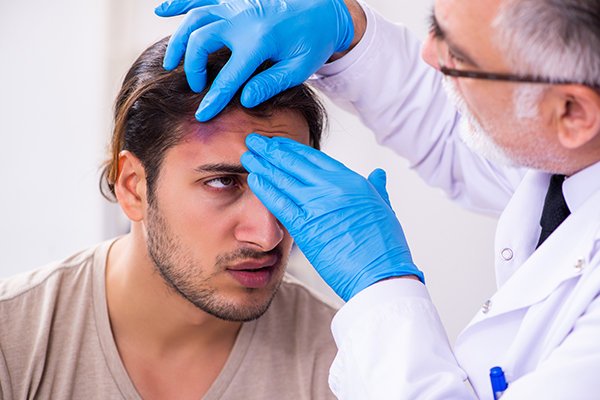
Consult your dermatologist in the following conditions:
- The bumps on your forehead hurt a lot, are extremely itchy, bleed, grow in size, or change color.
- The bumps on your forehead are accompanied by menstrual abnormalities.
- The bumps on your forehead do not subside even after the necessary care and treatment.
- The bumps on your forehead are a type of wart or skin tag.
- You cannot identify the type of forehead bump.
- Signs of infection appear.
- You have dandruff.
Final Word
Bumps on the forehead are especially annoying since they are so noticeable, sitting right on top of your face. But besides being a cosmetic concern, they can be quite discomforting too.
The first step toward treating these lesions is to determine what caused them. To that end, you must get them assessed by a dermatologist first rather than starting self-treatment. What might work for one type of bump may not work for another, so getting a proper diagnosis is important to figure out the best treatment approach.
- Was this article helpful?
- YES, THANKS!NOT REALLY


